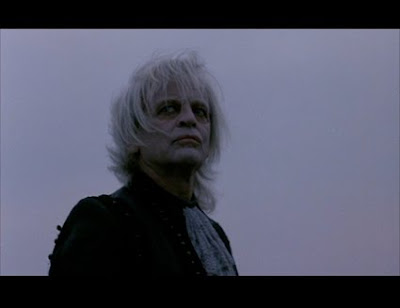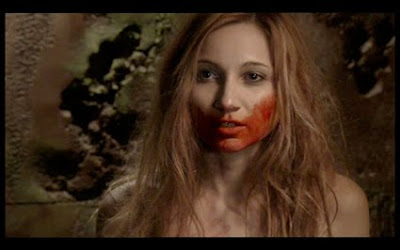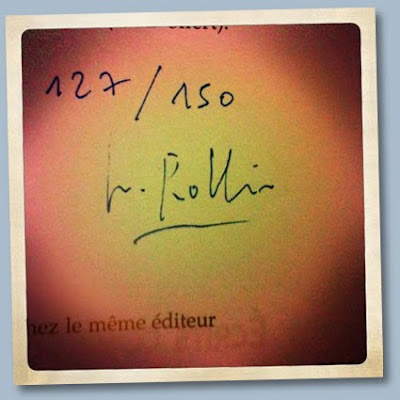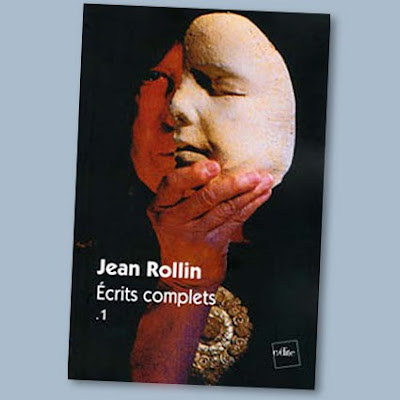
The Diabolical Dr. Z
Original title: Miss Muerte
Directed by: Jess Franco
Spain/France, 1966
Horror, 84min
Distributed by: Mondo Macabro
Repeated viewing of Jess Franco movies will (or should, if you are paying attention) result in the recognition of certain patterns, threads and themes that reoccur in many of his works. The Diabolical Dr. Z is one such movie where familiarity is found, more specifically the avenging woman theme with the most famous possibly being Sie tötete in Ekstase (She Killed in Ecstasy) 1971. On both movies Franco used a ”woman out for vengeance” plot most likely influenced by Cornell Woolrich’s The Bride Wore Black, a novel that not only inspired Jess Franco, but also the likes of Umberto Lenzi, Hitchcock and Truffaut.

A criminal, Hans Bergen, aka The Sadist Strangler [Guy Mariesse] escapes from death row – the papers report of his breakout and flight warning locals to be on the lookout. Safe inside his mansion, Doctor Zimmer [Antionio Jiménez Escribano who also starred in Franco’s first feature, the comedy Tenemos 18 ãnos (We Are 18 Years Old) 1959] reads of the daring getaway of this sinister criminal for his daughter Irma [Mabel Karr] and their servant Barbara [Lucía Prado]. Before you can say juxtaposition, the doorbell rings and they all freeze… But if you where expecting Bergen to enter the house and hold the Doctor and family hostage you got another thing coming, because here the tables are turned and Bergen becomes one of Dr. Z’s laboratory specimens.

In front of the board at the International Neurologist Congress Dr.Z presents his research and proclaims that he can manipulate the brain and make the most violent animal the most gentle – and vice versa – and that the time has come to take his research to a new level and experiment on humans. Not mentioning that Bergen the Sadist Strangler already has been cured. Obviously the board strike down upon him as Howard Vernon’s Dr. Vicas ridicules and rejects Dr. Z’s request! Crushed by their reaction Dr. Z suffers a fatal heart attack and with his dying breath, he begs Irma to take over his research… the ball is set in motion.

Dr. Philippe Brighthouse [Fernando Montes – who also starred in Gritos en la noche (The Awful Dr. Orlof) 1962] comforts Irma in her grief and also takes the advantage of bedding her in her weak condition - something I’ll get back to later on. The two go to the obligatory Franco nightclub scene and watch an erotically charged act featuring Miss Death [Estella Blain] and a mannequin. Irma takes the first steps towards claiming her revenge, and whilst trading places with a hitchhiker she’s just killed, she is hideously disfigured when the flames of the car she’s trying to torch flare up in her face.

The fancy robotic operating table of Dr.Z comes back into action as Irma and her slave Bergen turn Barbara one of her puppets, They then take to reconstructing Irma’s burned face on which she impressing enough operates on herself. It’s another obvious referent to Franco’s breakthrough feature The Awful Dr. Orlof and there are several others to be found if you are keeping count, and yes Bergen is the Morpho of The Diabolical Dr. Z. With her new identity, Irma kidnaps Nadja – Miss Death’s real name – who has become romantically engaged with Dr. Brighthouse! As Nadja is strapped to the table and has her brain manipulated by Irma she too becomes a mannequin of death and Irma can start to claim her vengeance on the men who ridiculed and drove her father to his grave. It is time to unleash Miss Muerte!

I really like The Diabolical Dr. Z., I find it to be one of the best early Franco works. It's in there among his so called Pop-Art movies and it's easy to understand why. I love discovering small details that find their way into these early movies. Not just intertextual referents, but also small details like the members as the International Neurologist Congress where the American representative has a patch over his eye – just like Europeans had been portrayed in US movies, here the Yanks get a poke with the stick.


Franco fans will know that Jess Franco likes to cast himself in his own movies. The Diabolical Dr. Z is no exception and here he gives a great performance as Inspector Tanner - a police inspector depraved of sleep due to his infant children at home - really brings some classic Franco quirk to the part. The older detective, Inspector Green, is Daniel White who you know as the composer of oh so many Franco scores. There’s like a genuine comedic quality to his reoccurring parts. In many ways it’s like watching a twisted Woody Allen portrayal, where he’s plagued with some neurotic fetish, rambling back and forth through the narrative. Just keep an eye on what he has on his desk in the first police station scene… Looking at the movies Franco shot at the same time period its perhaps no surprise that there’s a comedic element to his performance, both the Sci-Fi flick Cartes sur table (Attack of the Robots) 1966 and the spy action movie Lucky, el intrépido (Lucky the Inscrutable) 1967 as they both feature heavy spoofish and comedic takes on the two genres, and as I mentioned early on, his first feature was a comedy toned movie.
 The camerawork & lighting of D.P. Alejandro Ulloa - who also shot stuff like Lucio Fulci’s Una sull’altra (One on Top of the Other) 1969, Sergio Corbucci’s Vamos a matar compañeros (Companeros) 1970 and Luciano Ercoli’s Le foto prohibite di una signora per bene (The Forbidden Photos of a Lady Above Suspicion) 1970 to mention a few – is absolutely outstanding. The entire sequence on the train as Nadja seduces and finally murders Dr. Vicas [Howard Vernon] is textbook stuff. It should be lifted from this movie and shown to aspiring filmmakers for all eternity. The lighting, the tension, the atmosphere, the fragility of him slowly disrobing her as she gently prepares to strike him down with her poison laden fingernails… it’s a magic moment.
The camerawork & lighting of D.P. Alejandro Ulloa - who also shot stuff like Lucio Fulci’s Una sull’altra (One on Top of the Other) 1969, Sergio Corbucci’s Vamos a matar compañeros (Companeros) 1970 and Luciano Ercoli’s Le foto prohibite di una signora per bene (The Forbidden Photos of a Lady Above Suspicion) 1970 to mention a few – is absolutely outstanding. The entire sequence on the train as Nadja seduces and finally murders Dr. Vicas [Howard Vernon] is textbook stuff. It should be lifted from this movie and shown to aspiring filmmakers for all eternity. The lighting, the tension, the atmosphere, the fragility of him slowly disrobing her as she gently prepares to strike him down with her poison laden fingernails… it’s a magic moment.


Looking at the storytelling angle of The Diabolical Dr. Z, there are several things that stand out. This is Franco using his David Kuhne pseudonym and Jean-Claude Carrière (who went on to become one of the most acknowledged French screenwriters ever) at their finest - well it’s all objective isn’t it, and for me as a Franco fan, this is a fine moment – and here we find storytelling crafts coming into use. After the death of Dr. Z a short amount of time is spent creating empathy for Irma, she doesn’t want to go back to the old house as it will be “lonely in the big house without him”, Dr. Brighthouse backtalk’s the other members of the congress – which helps us take sides with Irma, and then when she pulls back out of her bedroom, startled by the empty wheelchair of her father we can understand her sadness. Instead she takes refuge in the arms of Dr. Brighthouse, which leads right into the next splendid little trick. By having him be a double-dipper being entangled with both Irma and Nadja, it creates a neat little triangle drama and builds a tension that we take with us into the final act, as we know Irma, Nadja and Dr. Brighthouse will have to come head to head before it’s all over. Great stuff and a delight to watch unfold.

Two last comments on the final moments of the movie. It would be fair to say that the quick fix is a trait of Jess Franco; he doesn’t waste time when the end is reached. The Diabolical Dr.Z plays exactly but that trait, the moment after the police settle the score the movie ends, but for one final quirk. The ending where Inspector Tanner, who miraculously after a good nights sleep away from the children who have been depriving him of sleep figures it all out and arrives on the scene of the crime at the exact right moment to set it all straight, certainly rings of a certain humour just like I mentioned previously. The final scene of the film, an open question, a last provocation, a last shock if you wish, as Nadja is consoled by her lover Dr. Brighthouse she raises her hand to his cheek and we will never know if she strokes his cheek lovingly or if those poison claws take one final victim. It’s a fantastic ending to a fantastic movie.

The Diabolic Dr.Z is a fantastic Franco movie. It’s possible that due to it being shot in black and white or the lack of required nudity and sleaze inhibit it from being recognised for the masterpiece that it is. For it is a masterpiece of a movie. A movie that is more of a Horror Noir with Gothic elements than the stuff we associate with Jess Franco. If anyone asked for a crash course to the movies of Franco, then The Diabolic Dr. Z would definitely be amongst my top five must-see titles for any one boldly entering the world of Jess Franco.

Image:
Black & White – Anamorphic Widescreen
Audio:
Dolby Digital Stereo 2.0, optional English or French dialogue, with English subtitles
Extras:
Mondo Macabro usually fill up their discs pretty damned well. This one is no exception as the disc contains the Jess Franco episode of Eurotica, an alternative opening sequence, Trailers, Galleries, production notes and stills. Finally there are the mandatory trailers for other Mondo Macabro titles.


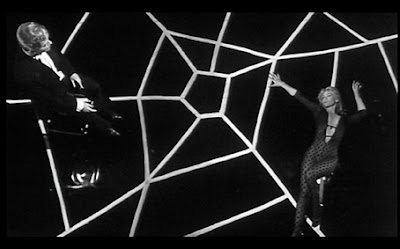


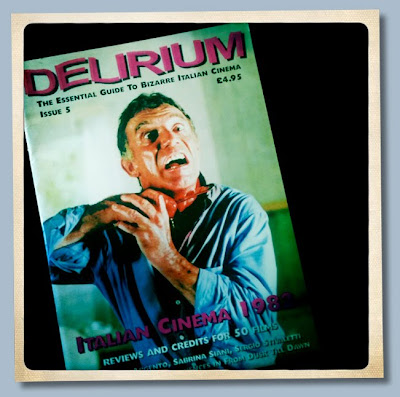



 Almost a decade later screenwriter/producer Augusto Caminito got more than he bargained for when he set about making something of a loosely connected sequel to Herzog’s seventies arthouse success. Although being Klaus Kinski and holding the largest ego in the world, Caminito’s production soon ran into trouble when original director, and veteran on the scene of Italian low budget horror fares, Mario Caiano stormed off the project, or was fired depending on which of the myths you want to believe in, after one of many loud fierce arguments with troublesome superstar Klaus Kinski. As the story goes La vittima designata (The Designated Victim) 1971 director Maurizio Lucidi directed parts of the movie, Star Crash 1978 and Contamination 1980 director Luigi Cozzi helped out and directed sections of the film, and according to his autobiography Kinski too directed a fair amount of the flick, although I wouldn’t know about that. Finally Caminito himself stepped away from his producer/screenwriter desk and took over the role of director himself.
Almost a decade later screenwriter/producer Augusto Caminito got more than he bargained for when he set about making something of a loosely connected sequel to Herzog’s seventies arthouse success. Although being Klaus Kinski and holding the largest ego in the world, Caminito’s production soon ran into trouble when original director, and veteran on the scene of Italian low budget horror fares, Mario Caiano stormed off the project, or was fired depending on which of the myths you want to believe in, after one of many loud fierce arguments with troublesome superstar Klaus Kinski. As the story goes La vittima designata (The Designated Victim) 1971 director Maurizio Lucidi directed parts of the movie, Star Crash 1978 and Contamination 1980 director Luigi Cozzi helped out and directed sections of the film, and according to his autobiography Kinski too directed a fair amount of the flick, although I wouldn’t know about that. Finally Caminito himself stepped away from his producer/screenwriter desk and took over the role of director himself. After a rather out of place rural opening the movie skips to Venice. Vampire hunter Professor Paris Catalano [Christopher Plummer] arrives at the house of Princess [Maria Cumani Quasimodo] who with her friend and priest Don Alvise [Donald Pleasence] has summoned him to help her with a situation… with the bad dreams she has been corresponding with him about. Helietta Canins [Barbara De Rossi] takes Castelano to an underground crypt where they talk about the possible inhabitant of the large coffin that lies there. Catalano is curious about a painting that Princess has had taken down before he arrived and here starts a series of backstory explanatory flashbacks concerning the family and Nosferatu. They all wind up going to visit a medium to help them dig deeper into the family history and low and behold, the vampire awakens and leaves his crypt!
After a rather out of place rural opening the movie skips to Venice. Vampire hunter Professor Paris Catalano [Christopher Plummer] arrives at the house of Princess [Maria Cumani Quasimodo] who with her friend and priest Don Alvise [Donald Pleasence] has summoned him to help her with a situation… with the bad dreams she has been corresponding with him about. Helietta Canins [Barbara De Rossi] takes Castelano to an underground crypt where they talk about the possible inhabitant of the large coffin that lies there. Catalano is curious about a painting that Princess has had taken down before he arrived and here starts a series of backstory explanatory flashbacks concerning the family and Nosferatu. They all wind up going to visit a medium to help them dig deeper into the family history and low and behold, the vampire awakens and leaves his crypt! So far it’s all been a wind up and build towards the vampire movie iconic moment – the ascent of the monster! From here on Kinski wanders around Venice searching for Helietta summons him with some chants when the medium releases him. Unsurprisingly Helietta, and her sister Maria [Anne Knecht] turn out to be the descendants of Nosferatu’s long lost love, Letiza, the woman on the painting. After decades of longing for his lost love, Nosferatu seeks out the woman who summoned him and plans to take her as his mate.
So far it’s all been a wind up and build towards the vampire movie iconic moment – the ascent of the monster! From here on Kinski wanders around Venice searching for Helietta summons him with some chants when the medium releases him. Unsurprisingly Helietta, and her sister Maria [Anne Knecht] turn out to be the descendants of Nosferatu’s long lost love, Letiza, the woman on the painting. After decades of longing for his lost love, Nosferatu seeks out the woman who summoned him and plans to take her as his mate.
 It’s a shame that the movie get’s s much slack and there’s some really decent moments in Nosferatu In Venice, and despite reprising a previous role, Kinski does give a pretty good performance – as he mostly did, even on the movies he supposedly hated working on. Nosferatu In Venice really suffers from that somewhat unjust bad reputation because it is a better movie that it’s said to be. Yes, it plays safe within the realm sticking to rules and regulations of the genre, but at the same time it dares to stick it’s neck out and twist formula around, even if it’s in the smallest ways. It could be because of the somewhat slow pacing, but at the same time it has a few neat effects and some nudity towards the ending. It might be because it's perhaps more of an arty horror flick than your regular gorefest. Anyways, I had fond memories of the movie, and they are still there after revisiting it again.
It’s a shame that the movie get’s s much slack and there’s some really decent moments in Nosferatu In Venice, and despite reprising a previous role, Kinski does give a pretty good performance – as he mostly did, even on the movies he supposedly hated working on. Nosferatu In Venice really suffers from that somewhat unjust bad reputation because it is a better movie that it’s said to be. Yes, it plays safe within the realm sticking to rules and regulations of the genre, but at the same time it dares to stick it’s neck out and twist formula around, even if it’s in the smallest ways. It could be because of the somewhat slow pacing, but at the same time it has a few neat effects and some nudity towards the ending. It might be because it's perhaps more of an arty horror flick than your regular gorefest. Anyways, I had fond memories of the movie, and they are still there after revisiting it again. Being a complex actor to work with, there where obviously issues with Kinski on set. One of the most apparent being his refusal to shave his head and completely dedicate himself to mimicking his former portrayal of Nosferatu, hence the full head of tattered hair he sports here. Caminito’s movie does bring a few of Herzog’s traits with him through, such as the rats symbolising plague, a metaphor for death, and also lifted over from the original sources is the ”totes angst” of the vampire. The totes angst of Nosferatu here is rather straightforward. Longing for love, evading death. It’s a romanticised portrayal, which is not to far from the original source as the vampire quite often holds a since long gone passion for a former lover and realises his own mortality when that fire is later relit by a like worthy character… think of Mina Harker who in the original Bram Stoker book reminds the vampire of his long lost love which makes him obsessed that he moves from Transylvania to England to be near her… not saying that Dracula is the original vampire story. I’m pro John Polidori for that one.
Being a complex actor to work with, there where obviously issues with Kinski on set. One of the most apparent being his refusal to shave his head and completely dedicate himself to mimicking his former portrayal of Nosferatu, hence the full head of tattered hair he sports here. Caminito’s movie does bring a few of Herzog’s traits with him through, such as the rats symbolising plague, a metaphor for death, and also lifted over from the original sources is the ”totes angst” of the vampire. The totes angst of Nosferatu here is rather straightforward. Longing for love, evading death. It’s a romanticised portrayal, which is not to far from the original source as the vampire quite often holds a since long gone passion for a former lover and realises his own mortality when that fire is later relit by a like worthy character… think of Mina Harker who in the original Bram Stoker book reminds the vampire of his long lost love which makes him obsessed that he moves from Transylvania to England to be near her… not saying that Dracula is the original vampire story. I’m pro John Polidori for that one. Something that caught my attention this time around and perhaps it’s something that is quite under used in the movie is the angst about dying found in the Plummer’s Catalano character. One of the first lines of dialogue he has is when he tells the Princess that he’s going to die soon. It’s a cheap but effective gimmick that hooks the audience as we want to know why he’s going to die, how will he die, and how come he knows he’s going to die? Unfortunately it’s never taken any further than being mentioned a few times. Neither is it brought up in the final battle between Catalano and Nosferatu – instead Catalano packs up and fuck’s off proclaiming that he’s been defeated. This obviously sets up Kinski as the winner in the battle over life and death. Now it may seem strange, but at the same time it’s a fascinating twist as the vampire genre commonly suffers from the problem that the audience end up rooting for the vampire and not the vampire hunter. There’s an effective little symbolic scene to end his arch in the movie, but it’s still a shame that one didn’t use the “I’m going to die” threat more creative.
Something that caught my attention this time around and perhaps it’s something that is quite under used in the movie is the angst about dying found in the Plummer’s Catalano character. One of the first lines of dialogue he has is when he tells the Princess that he’s going to die soon. It’s a cheap but effective gimmick that hooks the audience as we want to know why he’s going to die, how will he die, and how come he knows he’s going to die? Unfortunately it’s never taken any further than being mentioned a few times. Neither is it brought up in the final battle between Catalano and Nosferatu – instead Catalano packs up and fuck’s off proclaiming that he’s been defeated. This obviously sets up Kinski as the winner in the battle over life and death. Now it may seem strange, but at the same time it’s a fascinating twist as the vampire genre commonly suffers from the problem that the audience end up rooting for the vampire and not the vampire hunter. There’s an effective little symbolic scene to end his arch in the movie, but it’s still a shame that one didn’t use the “I’m going to die” threat more creative.


